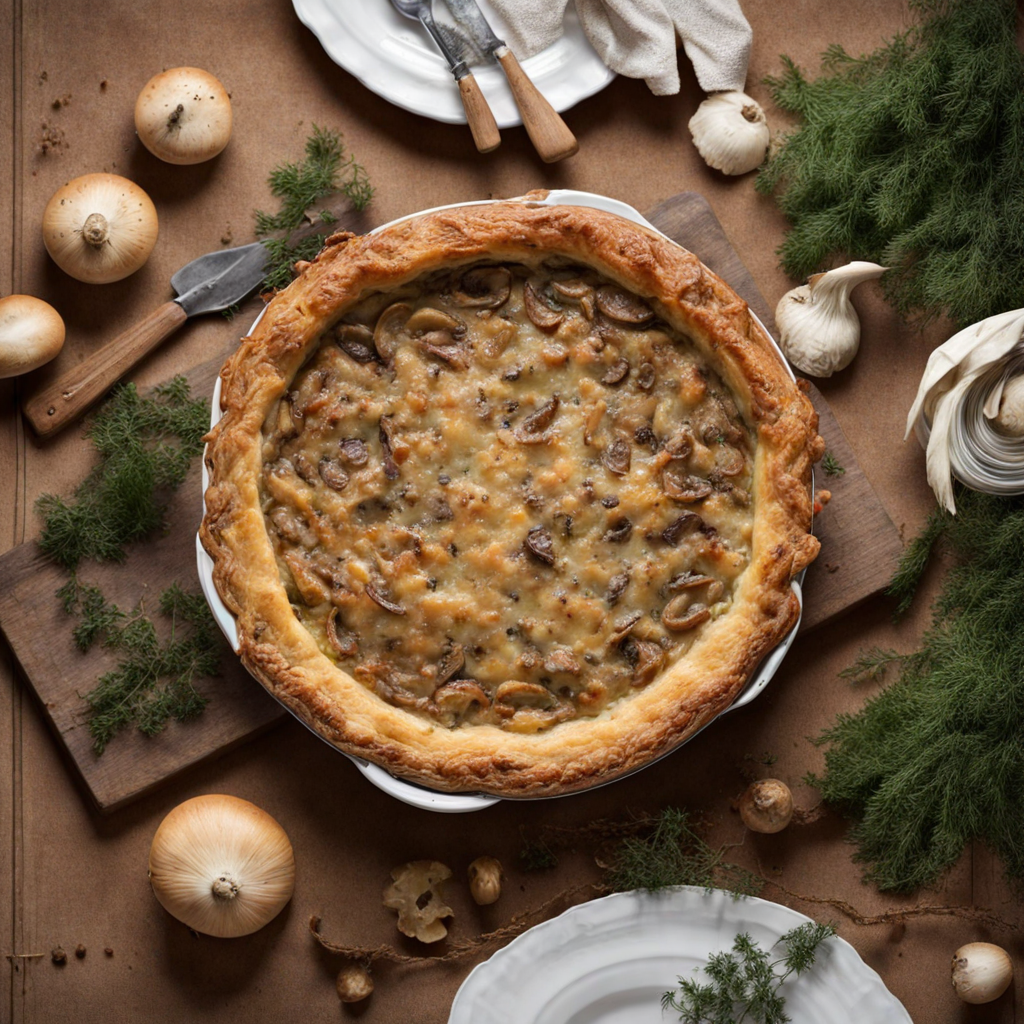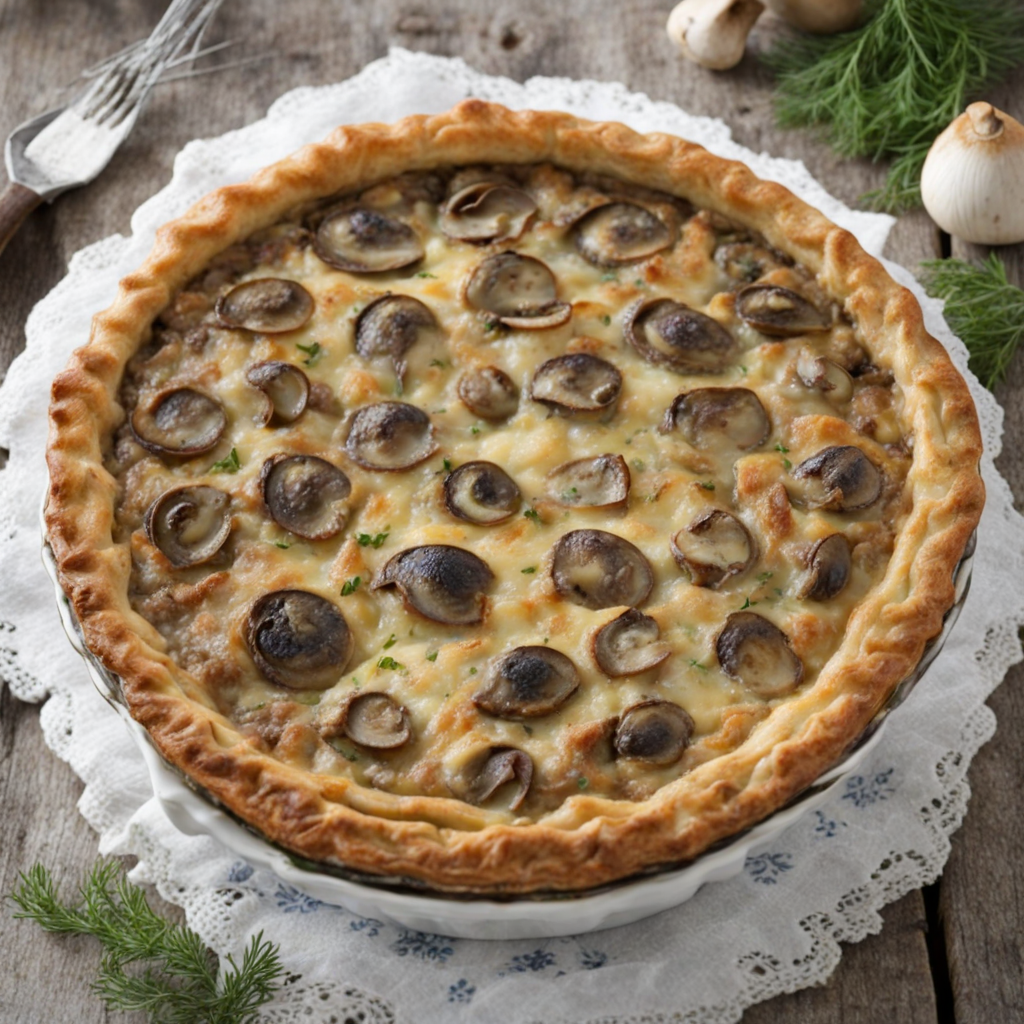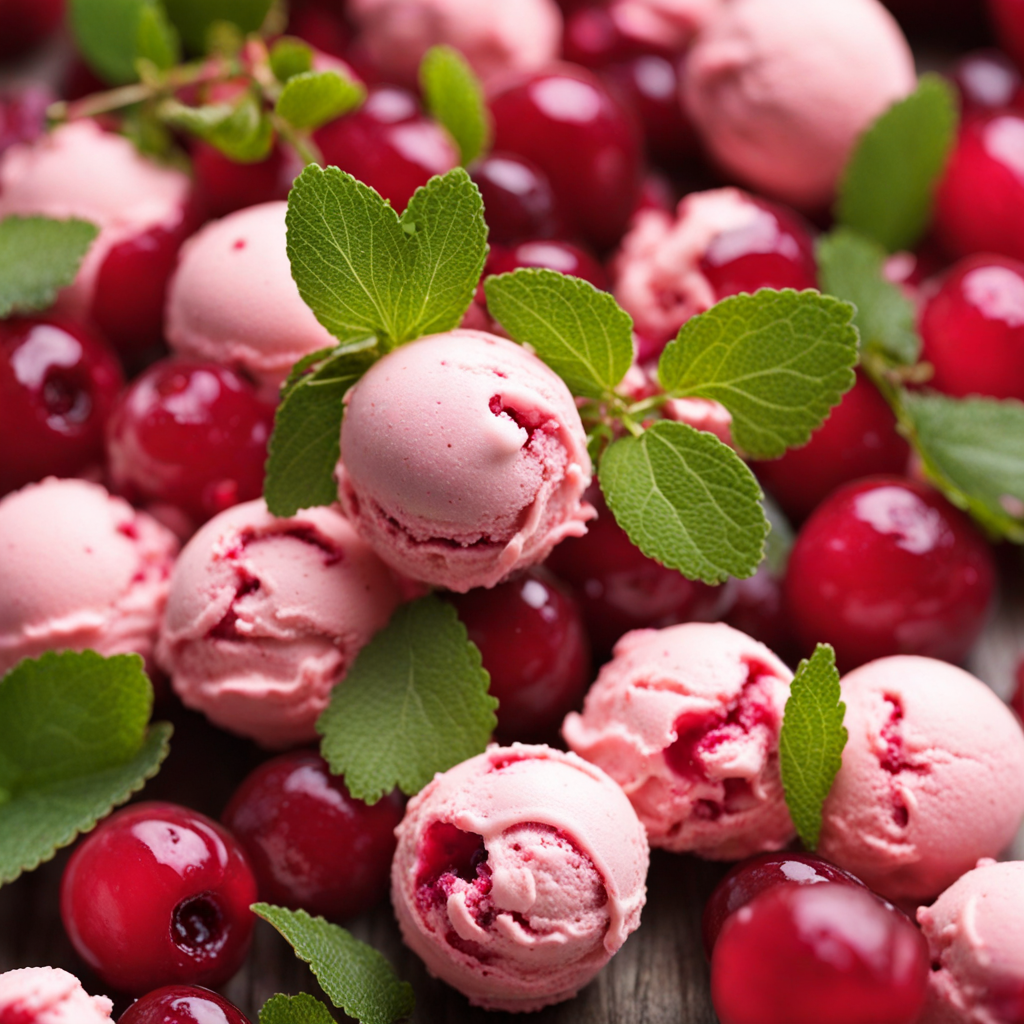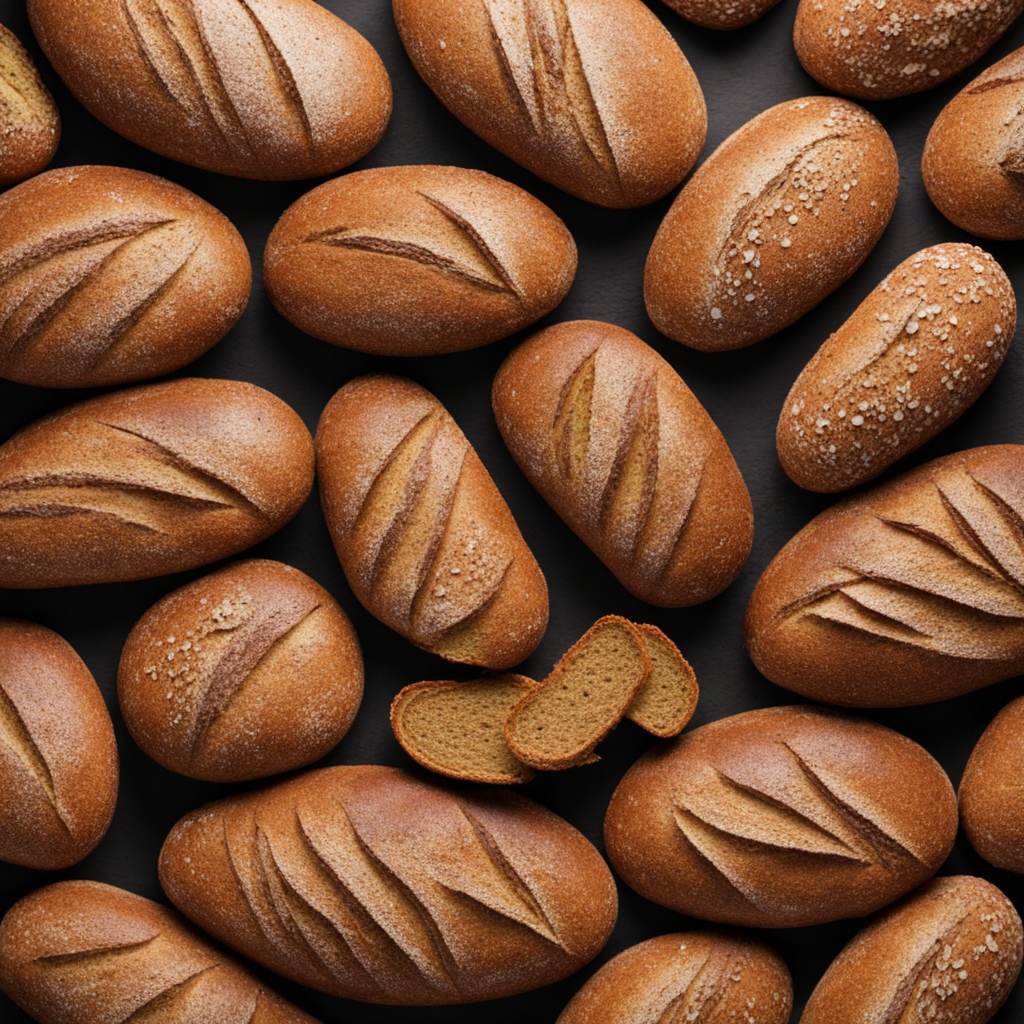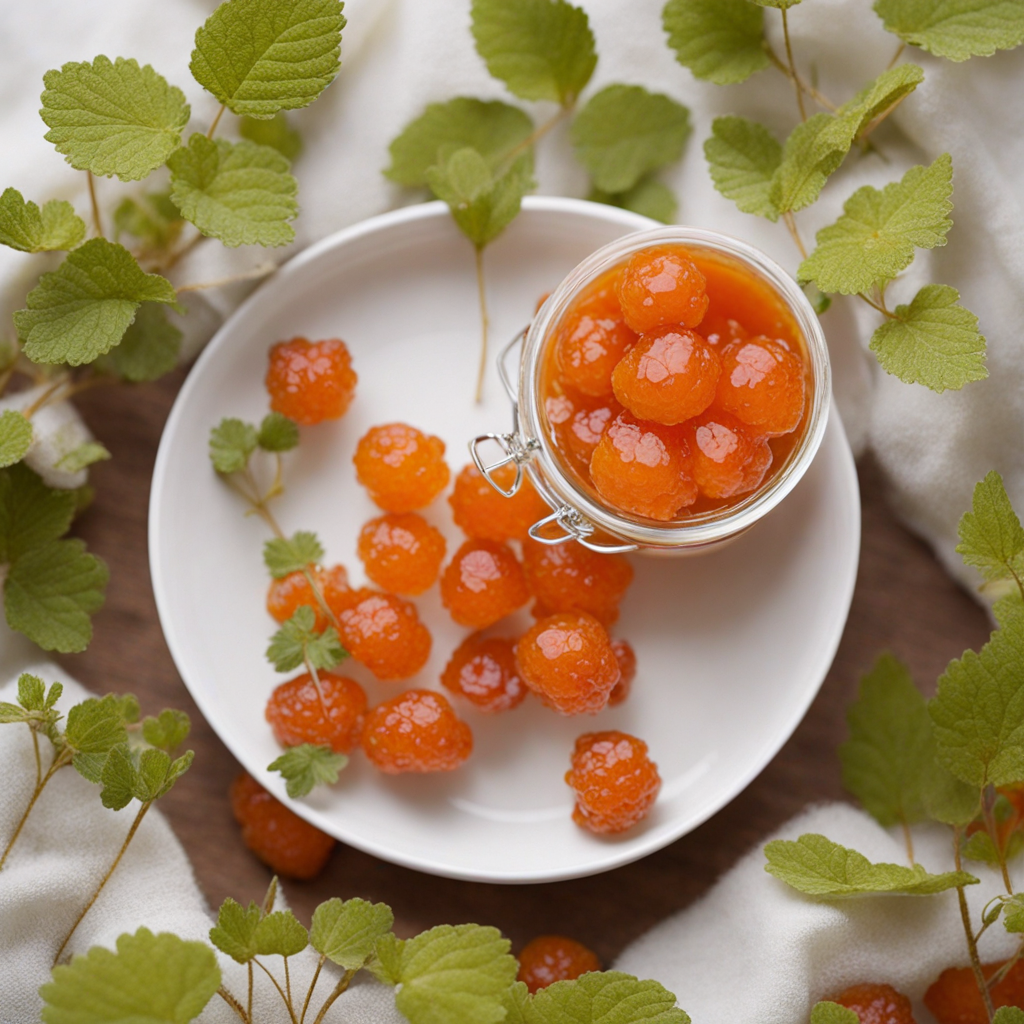Swedish Mushroom Pie
Swedish Mushroom Pie, or "Svamppaj," is a delightful dish that captures the essence of Sweden's rich culinary traditions. This savory pie is typically made with a flaky, buttery crust that cradles a hearty filling of mushrooms, often foraged from the pristine forests of Sweden. The mushrooms, such as chanterelles or porcini, are sautéed to perfection, allowing their earthy flavors to shine through. Combined with a blend of cream, eggs, and herbs like dill or thyme, the filling becomes a creamy, aromatic mixture that is both comforting and satisfying. What sets Swedish Mushroom Pie apart is its versatility; it can be served as a main dish or as a delightful side, making it perfect for any occasion. The golden-brown crust is not only visually appealing but also provides a satisfying crunch that beautifully contrasts with the creamy filling inside. Often accompanied by a light salad or served warm with a dollop of sour cream, each bite reveals layers of flavor that are reminiscent of Sweden’s lush landscapes and rich foraging culture. This pie is not just a dish but a celebration of seasonal ingredients, reflecting the Swedish philosophy of using what nature provides. It's ideal for cozy gatherings or festive occasions, inviting friends and family to share in a taste of Sweden’s natural bounty. The combination of mushrooms, herbs, and dairy creates a unique flavor profile that is both comforting and sophisticated, making Swedish Mushroom Pie a must-try for anyone looking to explore new culinary horizons.
How It Became This Dish
The History of Svamppaj: A Swedish Culinary Delight Introduction to Svamppaj Svamppaj, or mushroom pie, is a cherished dish in Swedish cuisine, celebrated for its rich flavors and rustic charm. This savory pie showcases the abundant mushrooms found in Sweden’s lush forests and serves as a celebration of nature’s bounty. With its flaky crust and creamy filling, svamppaj has become a staple in Swedish households, often enjoyed during gatherings, picnics, and festive occasions. This article explores the origins, cultural significance, and evolution of svamppaj, tracing its journey through time. Origins: A Culinary Connection to Nature The roots of svamppaj can be traced back to the agrarian societies of Scandinavia, where foraging for mushrooms has been a traditional practice for centuries. Sweden's dense forests, teeming with various fungi, provided a vital food source for early inhabitants. During the late summer and early autumn, families would venture into the woods to collect edible mushrooms such as chanterelles, porcini, and morels. This practice not only ensured sustenance but also fostered a deep connection to the land and its seasonal rhythms. The concept of a pie or pastry filled with ingredients is not unique to Sweden; variations exist across many cultures. However, the Swedish interpretation of the pie, particularly svamppaj, reflects the local ingredients and flavors that define the country’s culinary landscape. The use of mushrooms in svamppaj can be seen as a celebration of Swedish nature, highlighting the importance of seasonal and locally sourced foods in traditional Swedish cooking. Cultural Significance: A Symbol of Togetherness Svamppaj is more than just a dish; it embodies the Swedish ethos of simplicity, sustainability, and togetherness. In Sweden, food often plays a central role in social gatherings, and svamppaj is a popular choice for both casual and festive occasions. It is commonly served at Midsummer celebrations, where families and friends come together to enjoy the long summer days. The pie is also a staple at crayfish parties and other seasonal festivities, reflecting the Swedish tradition of communal dining. Moreover, svamppaj is a dish that brings people together in the kitchen. The process of foraging for mushrooms and preparing the pie encourages collaboration and shared experiences among family members. This communal aspect is further amplified during the autumn months, when mushroom picking becomes a social activity. As families gather to cook and share their culinary creations, svamppaj serves as a delicious reminder of the bonds formed over food. Development Over Time: From Rustic Origins to Modern Interpretations Historically, svamppaj was a humble dish, often made with whatever ingredients were available. The crust was typically a simple combination of flour, butter, and water, reflecting the traditional Swedish approach to cooking—minimalist yet flavorful. In its earliest forms, the filling would consist of sautéed mushrooms, onions, and perhaps a dash of cream, allowing the natural flavors of the mushrooms to shine through. As Sweden underwent social and economic changes, particularly during the 19th and 20th centuries, svamppaj evolved. The Industrial Revolution brought about shifts in food production and availability, leading to the introduction of new ingredients and cooking techniques. Cream became more accessible, enriching the filling of svamppaj and elevating its flavor profile. Additionally, the rise of culinary tourism and the global exchange of ideas began to influence Swedish cuisine, with chefs experimenting with various herbs, spices, and additional ingredients. In the late 20th century, svamppaj gained popularity in urban areas, where food culture began to flourish. Restaurants and cafes started featuring svamppaj on their menus, often adding gourmet twists to the traditional recipe. Ingredients like goat cheese, sun-dried tomatoes, and fresh herbs found their way into the filling, appealing to a broader audience and showcasing the versatility of the dish. This modern adaptation of svamppaj reflects a growing trend in Swedish cuisine to embrace creativity while honoring traditional flavors. Contemporary Svamppaj: A Dish for All Seasons Today, svamppaj continues to be a beloved dish in Sweden, enjoyed across various settings—whether in homes, restaurants, or outdoor gatherings. The pie is often served hot or warm, accompanied by a fresh salad or pickled vegetables, and is equally delightful as a leftover. The versatility of svamppaj allows it to be adapted for different dietary preferences, with vegetarian and gluten-free variations becoming increasingly popular. The cultural significance of svamppaj remains strong in Sweden, symbolizing the connection to nature, community, and tradition. For many Swedes, the act of foraging for mushrooms during the autumn is a cherished ritual that connects them to their heritage. The flavor of svamppaj evokes memories of family gatherings, shared meals, and the changing seasons, reinforcing the idea that food is not just sustenance but a vessel for storytelling and connection. As interest in sustainable and local eating continues to grow globally, svamppaj stands as an exemplary dish that embodies these principles. It encourages the use of seasonal produce and promotes foraging as a way to engage with the environment. Swedish chefs and home cooks alike are increasingly celebrating the natural flavors of wild mushrooms, ensuring that svamppaj remains a relevant and cherished part of Sweden’s culinary identity. Conclusion: A Slice of Swedish Heritage In conclusion, svamppaj is a delicious reflection of Sweden’s rich culinary heritage, rooted in the traditions of foraging and communal dining. Its evolution from a simple rustic dish to a modern culinary favorite illustrates the adaptability and enduring appeal of this savory pie. As Swedes continue to embrace their connection to nature and seasonal ingredients, svamppaj will undoubtedly remain a beloved symbol of togetherness and the beauty of Swedish cuisine. Whether enjoyed in a cozy home, a bustling café, or under the open sky during a summer feast, svamppaj is more than just food; it is a slice of Swedish heritage, steeped in history and culture.
You may like
Discover local flavors from Sweden


